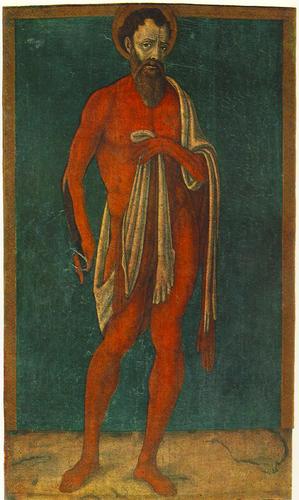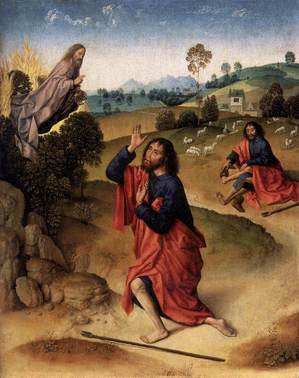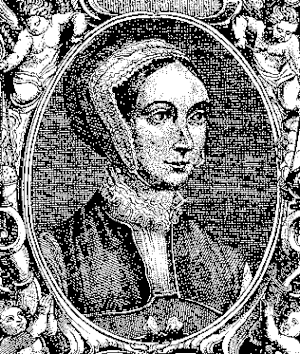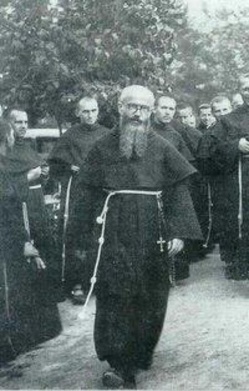 Nathanael was one of Christ’s first converts, yet his name does not occur again till the last chapter of St. John’s Gospel, where he is mentioned in company with certain of the Apostles, to whom Christ appeared after His resurrection. Now, why should the call of Nathanael have been recorded in the opening of the Gospel, among the acts of Christ in the beginning of His Ministry, unless he was an Apostle? Philip, Peter, and Andrew, who are mentioned at the same time, were all Apostles; and Nathanael’s name is introduced without preface, as if familiar to a Christian reader. At the end of the Gospel it appears again, and there too among Apostles. Besides, the Apostles were the special witnesses of Christ, when He was risen. He manifested Himself, “not to all the people,” says Peter, “but unto witnesses chosen before of God, even to us, who did eat and drink with Him after He rose from the dead.” [Acts x. 41.] Now, the occasion on which Nathanael is mentioned, was one of these manifestations. “This is now the third time,” says the Evangelist, “that Jesus was manifested to His disciples, after that He was risen from the dead.” It was in the presence of Nathanael, that He gave St. Peter his commission, and foretold his martyrdom, and the prolonged life of St. John. All this leads us to conjecture that Nathanael is one of the Apostles under another name. Now, he is not Andrew, Peter, or Philip, for they are mentioned in connexion with him in the first chapter of the Gospel; nor Thomas, James, or John, in whose company he is found in the last chapter; nor Jude (as it would seem), because the name of Jude occurs in St. John’s fourteenth chapter. Four Apostles remain, who are not named in his Gospel,–St. James the Less, St. Matthew, St. Simon, and St. Bartholomew; of whom St. Matthew’s second name is known to have been Levi, while St. James, being related, was not at any time a stranger to our Lord, which Nathanael evidently was. If then Nathanael were an Apostle, he was either Simon or Bartholomew. Now it is observable, that, according to St. John, Philip brought Nathanael to Christ; therefore Nathanael and Philip were friends: while in the other Gospels, in the list of Apostles, Philip is associated with Bartholomew; “Simon and Andrew, James and John, Philip and Bartholomew.” [Matt. x. 3.] This is some evidence that Bartholomew and not Simon is the Nathanael of St. John. On the other hand, Matthias has been suggested instead of either, his name meaning nearly the same as Nathanael in the original language. However, since writers of some date decide in favour of Bartholomew, I shall do the like in what follows.
Nathanael was one of Christ’s first converts, yet his name does not occur again till the last chapter of St. John’s Gospel, where he is mentioned in company with certain of the Apostles, to whom Christ appeared after His resurrection. Now, why should the call of Nathanael have been recorded in the opening of the Gospel, among the acts of Christ in the beginning of His Ministry, unless he was an Apostle? Philip, Peter, and Andrew, who are mentioned at the same time, were all Apostles; and Nathanael’s name is introduced without preface, as if familiar to a Christian reader. At the end of the Gospel it appears again, and there too among Apostles. Besides, the Apostles were the special witnesses of Christ, when He was risen. He manifested Himself, “not to all the people,” says Peter, “but unto witnesses chosen before of God, even to us, who did eat and drink with Him after He rose from the dead.” [Acts x. 41.] Now, the occasion on which Nathanael is mentioned, was one of these manifestations. “This is now the third time,” says the Evangelist, “that Jesus was manifested to His disciples, after that He was risen from the dead.” It was in the presence of Nathanael, that He gave St. Peter his commission, and foretold his martyrdom, and the prolonged life of St. John. All this leads us to conjecture that Nathanael is one of the Apostles under another name. Now, he is not Andrew, Peter, or Philip, for they are mentioned in connexion with him in the first chapter of the Gospel; nor Thomas, James, or John, in whose company he is found in the last chapter; nor Jude (as it would seem), because the name of Jude occurs in St. John’s fourteenth chapter. Four Apostles remain, who are not named in his Gospel,–St. James the Less, St. Matthew, St. Simon, and St. Bartholomew; of whom St. Matthew’s second name is known to have been Levi, while St. James, being related, was not at any time a stranger to our Lord, which Nathanael evidently was. If then Nathanael were an Apostle, he was either Simon or Bartholomew. Now it is observable, that, according to St. John, Philip brought Nathanael to Christ; therefore Nathanael and Philip were friends: while in the other Gospels, in the list of Apostles, Philip is associated with Bartholomew; “Simon and Andrew, James and John, Philip and Bartholomew.” [Matt. x. 3.] This is some evidence that Bartholomew and not Simon is the Nathanael of St. John. On the other hand, Matthias has been suggested instead of either, his name meaning nearly the same as Nathanael in the original language. However, since writers of some date decide in favour of Bartholomew, I shall do the like in what follows.
What then do we learn from his recorded character and history? It affords us an instructive lesson. When Philip told him that he had found the long-expected Messiah of whom Moses wrote, Nathanael (that is, Bartholomew) at first doubted. He was well read in the Scriptures, and knew the Christ was to be born in Bethlehem; whereas Jesus dwelt at Nazareth, which Nathanael supposed in consequence to be the place of His birth,–and he knew of no particular promises attached to that city, which was a place of evil report, and he thought no good could come out of it.
Philip told him to come and see; and he went to see, as a humble single-minded man sincerely desirous to get at the truth. In consequence, he was vouchsafed an interview with our Saviour, and was converted.
Blessed John Henry Newman
Plain and Parochial Sermons












